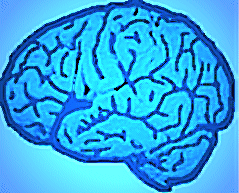
Neuroscience: A Journey Through the Brain
 |
Neuroscience: A Journey Through the Brain |
| Main Page Organization Development Neuron Systems About the site (Glossary) References |
The Major Systems: Sensory Systems - Auditory System
|
Sensory System sub categories: Chemical Visual Auditory Somatic |
To understand how humans hear, there are three important topics:
Structures of the Ear (back to top)
A basic understanding of the structure of the ear is required to understand how the nervous system receives and processes auditory information.
| Location | Structure | Function |
| Outer Ear | Pinna | Cartilage covered by skin that brings sound into the ear |
| Auditory Canal | Entrance to the internal ear | |
| Tympanic Membrane (a.k.a. Eardrum) | Amplification of sound waves | |
| Middle Ear | Ossicles: malleus, incus and stapes | Variations in air pressure are converted into ossicle movement; Amplification of sound waves |
| Eustachian tube | Connects the air in the ear with the air in the mouth | |
| Inner Ear | Cochlea | Location of auditory transduction |
| Labyrinth | Part of the vestibular apparatus; helps maintain balance |
The cochlea is the structure involved in the transduction of auditory signals. The cochlea is a long tube curled in the shape of a snail's shell. Elongated, we can see three divisions: the scala vestibula, scala media, and scala tympani. Separating the vestibula from the media is Reissner's membrane, and separating the tympani from the media is the basilar membrane. Sitting on the basilar membrane is the Organ of Corti, which contains the auditory hair cell receptors, and is below the tectorial membrane.
Transduction of Auditory Signals (back to top)
The basilar membrane has two structural properties that determine the way it responds to sound. First, the membrane is wider at its apex than at its base. Second, the stiffness of the membrane decreases from base to apex, with the base being 100 times stiffer. High frequency sounds cause the base of the membrane to vibrate a good deal, dissipating the energy and causing the sound wave not to travel very far down the membrane. Low frequency sounds generate waves that travel all the way to the 'floppier' apex of the membrane before the energy dissipates.
The auditory receptor cells, the hair cells, are connected to the basilar membrane, and their firing is dependant on the amount and location of waves traveling along the basilar membrane. The movement of hair cells causes ion channels to open, and thus initiates an electrical propagation path to send sound informationto the brain. These cells form connections with spiral ganglion neurons, whose axons form the auditory nerve (cranial nerve VIII), and project to the medulla.
Processing of Auditory Information in the Brain (back to top)
Starting from the spiral ganglion cells, the central auditory path can be depicted as follows:

The cochlear nucleus possesses tonotopic maps of the basilar membrane, such that there are bands of cells with similar characteristic frequencies, and characteristic frequencies increase from posterior to anterior. These cells project to the brainstem to the superior olive, whose tracts ascend along the lateral lemniscus (a lemniscus is a collection of axons) to the inferior colliculus of the midbrain. From there, auditory connections are sent to the medial geniculate nucleus of the thalamus and on to the auditory cortex in the temporal lobe.
Created and Maintained by: Melissa
Davies
Last Updated: April 09, 2002 09:01 PM